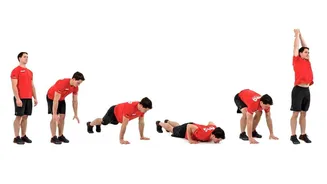Why Jump Rope?
Jumping rope is an incredibly efficient exercise, requiring minimal space and equipment. It's a low-impact activity that's easy on the joints, making it suitable
for people of varying fitness levels. The simplicity of jump rope allows for convenient workouts anytime, anywhere. This accessibility is a major advantage, helping to overcome common barriers to exercise like lack of time or access to a gym. Moreover, jumping rope significantly improves cardiovascular health, as it elevates the heart rate, strengthens the heart muscle, and enhances blood circulation. These factors collectively contribute to a healthier and more resilient cardiovascular system, vital for overall well-being. Jump rope also promotes better coordination and balance, as it demands precise timing and spatial awareness. The rhythmic movement of jumping improves agility and reflexes, enhancing overall physical performance.
Calorie Burning Power
Jump rope is a champion when it comes to burning calories. A brisk jump rope session can burn more calories than running at a moderate pace. This high calorie expenditure makes it an excellent choice for weight management, as it helps create a calorie deficit, which is essential for shedding extra pounds. The intensity of jumping rope can be easily adjusted to suit different fitness levels. Beginners can start with shorter intervals and slower speeds, gradually increasing the duration and intensity as their fitness improves. More advanced exercisers can incorporate high-intensity interval training (HIIT) techniques, alternating between short bursts of intense jumping and periods of rest. This method maximizes calorie burn in a shorter amount of time, providing a highly efficient workout. Jumping rope also increases the metabolic rate, which means the body continues to burn calories even after the workout is completed, promoting greater fat loss over time.
Heart Health Benefits
Jump rope is a fantastic exercise for boosting cardiovascular health. It strengthens the heart, improves blood circulation, and lowers the risk of heart disease. The rhythmic, continuous motion of jumping elevates the heart rate, effectively acting as a cardio workout. This increased heart rate strengthens the heart muscle, making it more efficient at pumping blood throughout the body. Improved blood circulation ensures that vital oxygen and nutrients are delivered to all cells, supporting overall bodily function and health. Consistent jump rope sessions can lead to lower blood pressure and improved cholesterol levels. These benefits contribute to a decreased risk of heart-related ailments, making jump rope a valuable tool for promoting longevity and well-being. Regular jumping also enhances lung capacity and stamina, allowing the body to better handle physical stress and demanding activities.
Coordination and Agility
Beyond its cardiovascular benefits, jumping rope significantly improves coordination and agility. It is a fantastic workout for the mind-body connection. The act of jumping requires precise timing, balance, and spatial awareness. This constant need for coordination enhances the brain's ability to process and react quickly, improving overall motor skills. Regular practice leads to quicker reflexes, improved reaction times, and better overall coordination. This, in turn, can have positive effects on daily activities, such as walking, running, and even performing everyday tasks more efficiently. Jumping rope also helps improve balance, which is important for injury prevention. As the body adapts to the rhythmic jumping, the muscles in the legs, ankles, and core work together to maintain stability, reducing the risk of falls and injuries. This improved coordination and agility can be particularly beneficial for athletes and those looking to enhance their physical performance.
Getting Started Safely
Before you begin jumping rope, it's wise to consider some safety tips to ensure a safe and effective workout. Choose the right rope size by standing on the middle of the rope and bringing the handles to your armpits; the handles should reach your armpits. Begin with short sessions, gradually increasing the duration as you get fitter. Warm up before each session with dynamic stretches like arm circles, leg swings, and torso twists. This prepares the muscles and joints for exercise. Choose a suitable surface, preferably a surface that provides some cushioning to reduce impact on the joints, like a wooden floor or a rubber mat. Wear supportive shoes. Start by practicing the basic jump, keeping the knees slightly bent and landing softly on the balls of your feet. Listen to your body and take breaks when needed. If you have any health conditions, especially cardiovascular issues or joint problems, consult your doctor before starting this exercise.
Integrating into Routine
Jump rope can be effortlessly integrated into your existing fitness routine. It can be used as a warm-up before a strength training session or as a standalone cardio workout. Start with short sessions, even just 5-10 minutes, and gradually increase the duration to 20-30 minutes as your fitness improves. Vary the workout by incorporating different jump rope techniques. Try high knees, butt kicks, and criss-cross jumps to engage different muscle groups and keep things interesting. You can also integrate jump rope into a HIIT routine by alternating between intense jumping intervals and rest periods. This method maximizes calorie burn and improves cardiovascular fitness. Make it fun by listening to music and jumping to the rhythm. The rhythmic nature of jumping makes it a great way to relieve stress and boost your mood. By making it a regular part of your fitness routine, you can enjoy all the benefits it offers.












